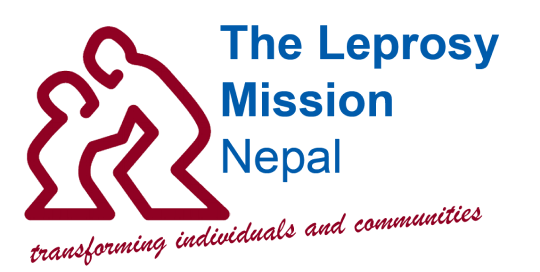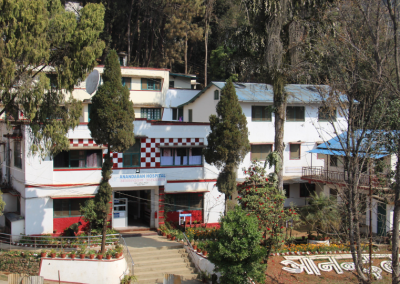A journey from then to now:
How Anandaban is transitioning from a leprosy hospital to a tertiary care center, addressing needs of leprosy affected people beyond leprosy
Where it all started
Anandaban Hospital officially opened its doors in 1957 AD. Following an agreement with the then HMG, the hospital was assigned Lalitpur district for initiating its leprosy control activities. Primarily because of the fact that the hospital was focused on anti-leprosy activities, it quickly developed knowledge and expertise in Dermatology. The expertise was only strengthened as it continued its activities through outreach clinics and initiatives on-site. It was only in 1992, that Anandaban Hospital expanded to include general services. Three decades of expertise in Dermatology transitioned to general services, and despite the push to make Anandaban Hospital a tertiary care center, it was still, only best known for being a “Leprosy Hospital.”
The 2015 Earthquake
The devastating earthquake in 2015, damaged several of the hospital’s structures. In the after-shocks that followed, the number of people visiting the hospital increased massively. Some would come with minor lacerations, broken hands, feet, while others weren’t as fortunate. As existing structures were damaged, people affected by leprosy, who were admitted to the hospital at the time, were not too keen to go back to the wards. The problem wasn’t just a lack of trust in the building’s structure. Many of the patients had operated hands and feet, and it was nigh impossible for patients to evacuate the building in the event of another major aftershock.
The hospital not only lacked a safe place to send the patients to, but also lacked the essential equipments to take care of them. It was not just the people affected by Leprosy, who suffered because of the damage brought by the earthquake. Because of a lack of infrastructure and equipment, the hospital had to turn away several patients and refer them to other hospitals. A pregnant woman in her 3rd trimester, a child battling pneumonia for nearly a month, a person with appendicitis, who almost didn’t make it, turning away patients was never normal at Anandaban, but now, people were being turned away in numbers.
The Need
It was perhaps for the first time in the hospital’s long history, that a clear need was felt for better infrastructures and equipment. But a building like that would come at a high price. A price, which The Leprosy Mission Nepal alone could not bear. Conversations ensued and in 2015, the United States Agency for International Development accepted the proposal put forth by The Leprosy Mission Nepal to create a Trauma and Multi-specialist wing within Anandaban Premises.
Establishing the building was only one part of the equation. To ensure that Anandaban Hospital developed into a Tertiary Care center, capable of providing high-quality services to both leprosy and general patients, it needed better equipment. The existing equipment could neither handle the level of services that the new Trauma and Multi-specialist wing was made for nor the increasing number of trauma cases visiting the hospital, and failure to match the level of services with new equipment would have grave consequences.
Through The Generous Support
A new proposal was then sent to USAID to update and install equipment into the new Trauma and Multi-Specialist Wing. The proposal was quickly accepted and the hospital breathed a new life with the generous support of the American People. The new equipment will not only help elevate the level of care provided to outpatients but also provide complete tertiary care to people affected by Leprosy.
“We always felt insecure when providing critical care to both general and leprosy patients. Due to lack of proper equipment, we had to frequently refer patients to other hospitals, especially people affected by leprosy who had severe ENL reactions and Dapsone Hypersensitivity reactions. However, with the new structure and equipment in place, we are optimistic that Anandaban Hospital will be able to provide better services to both inpatients and outpatients. We hope that the new pieces of equipment will support a better outcome of critical cases, which will help us reduce the mortality of leprosy and general patients in future.”
Dr. Indra Napit
Senior Orthopaedic Surgeon





Recent Comments